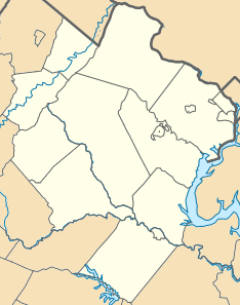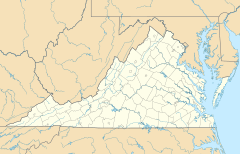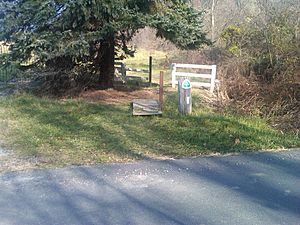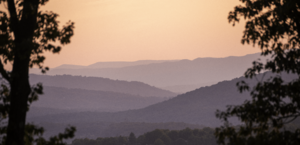Linden, Virginia facts for kids
Quick facts for kids
Linden, Virginia
|
|
|---|---|
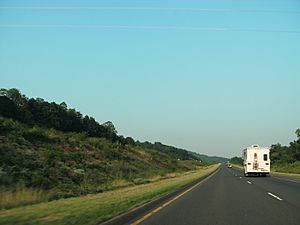
About 3 miles west of Linden on I-66
|
|
| Country | United States |
| State | Virginia |
| County | Fauquier and Warren |
| Time zone | UTC−5 (Eastern (EST)) |
| • Summer (DST) | UTC−4 (EDT) |
| ZIP codes |
22642
|
| Area code(s) | 540 |
Linden is a small community in Virginia, located west of Washington, D.C.. It sits across two counties: Fauquier and Warren. You can find it right off Interstate 66 at exit 13.
Contents
Linden's History
Linden has a long history! In 1669, two explorers named John Lederer and John Catlett are said to have officially discovered the beautiful Shenandoah Valley right where Linden is today. Their discovery helped more people move into the area. There's even a special marker in Linden to remember this important event.
From the mid-1700s until the 1950s, the Linden area was famous for its many apple orchards. There were once 25 different orchards here!
The Linden Methodist Church was built in 1842. Many other buildings from the 1800s still stand today. In November 1954, a fire destroyed the church. It was thought to be caused by a faulty pipe in the wood-burning stove. The church's tall steeple and bell were a well-known sight in the community. Firefighters bravely fought the blaze for four hours. Some heroic men, including Rev. B. L. Lock, went into the burning building. They saved the church's old pulpit, pews, and bible. These items had been used in an even older church building before.
The fire revealed several graves under the church's stone foundation. This made it very hard to rebuild in the same spot. So, the church decided to move to a new location. This new spot was next to the parsonage, on the other side of Highway 55. In December 1955, they had a groundbreaking ceremony for the new church. When it was finished, the new church was furnished with the pulpit and pews saved from the fire.
Linden During the Civil War
Because it was easy to cross the Blue Ridge Mountains at Linden, the town became a travel point during the United States Civil War. Both the Union and Confederate armies passed through here. Linden was part of "Mosby's Confederacy." This was an area where Mosby's Rangers, a group of Confederate soldiers led by Colonel John S. Mosby, often gathered and rested. Many places showing the bravery of this group are a short drive from Linden.
The Battle of Manassas Gap
A small battle, called the Battle of Manassas Gap, happened near Linden on July 23, 1863. This battle took place after the Confederate Gettysburg campaign.
After retreating across the Potomac River, Robert E. Lee's Army of Northern Virginia moved up the Shenandoah Valley. The Union Army of the Potomac, led by George G. Meade, crossed the river east of the Blue Ridge Mountains. They followed Lee into Virginia. On July 23, Meade ordered the III Corps to try and stop the retreating Confederate soldiers. They planned to do this by pushing through Manassas Gap.
The Union attack began slowly, pushing back a Confederate brigade. Later in the afternoon, a strong Union attack drove the Confederate soldiers further. They were then joined by more Confederate troops and artillery. As night fell, the Union attacks stopped because they were not well organized. During the night, the Confederate forces moved away into the Luray Valley. On July 24, the Union army took over Front Royal, Virginia, but Lee's army was safely out of reach.
Linden Today
Today, Linden is mostly a "bedroom community." This means many people who live here travel to other towns for work. It has neighborhoods like Apple Mountain Lake and Blue Mountain. You can find two gas stations, three stores, a restaurant, and a post office with the zip code 22642.
Linden is also home to the Saint Dominic's Monastery. It offers access points to the famous Appalachian Trail and the G. Richard Thompson Wildlife Management Area.
A main access point for the Appalachian Trail is on Tuckers Lane, just off Route 55 (the John Marshall Highway). To get there, turn onto Tuckers Lane from John Marshall Highway. Go under I-66 to find the parking area on your right.
Linden's Geography
Linden sits right on the border between Warren and Fauquier counties. It's located along Virginia State Route 55 (the John Marshall Highway) and Interstate 66. At about 945 feet above sea level, Linden is at the top of the Manassas Gap in the Blue Ridge Mountains. This makes it a natural gateway into the Shenandoah Valley, just as it was for early settlers.
The Manassas Gap Railroad was finished in 1854. It ran through Linden, connecting Mount Jackson to Manassas Junction. This railroad actually gave the town of Manassas its name! Today, these tracks are part of the Norfolk Southern rail system. The popular north-south Appalachian Trail crosses Highway 55 and goes under I-66 in Linden. It follows its path along the east side of the Blue Ridge Mountains.
While the main "village" of Linden is about 945 feet above sea level, many nearby attractions and activity areas climb much higher. Some reach over 2,100 feet, offering a wide variety of natural experiences.
Schools in Linden
Students who live on the Warren County side of Linden attend schools in Front Royal. These schools are managed by the Warren County School Board. High school students go to Warren County High School. Mountain Laurel Montessori School is also nearby in Front Royal.
For students living in Fauquier County, primary and middle schools are in the Marshall area. High school students attend Fauquier High School in Warrenton, Virginia.
Plants and Animals in Linden
Linden is home to a variety of plants and animals. Here are some commonly seen local species:
- Plants
- Reptiles
- Snakes that are venomous (can bite and inject poison)
- Northern copperhead (Agkistrodon contortrix mokasen)
- Timber rattlesnake (Crotalus horridus horridus)
- Snakes that are non-venomous (not poisonous)
- Black snake (Pantherophis obsoletus)
- Turtles
- Eastern box turtle (Terrapene carolina carolina)
- Snakes that are venomous (can bite and inject poison)
- Amphibians (animals that live both on land and in water)
- American toad (Bufo americanus)
- Fish
- Birds
- Eastern bluebird (Sialia sialis)
- American robin (Turdus migratorius)
- Grey catbird (Dumetella carolinensis)
- Black vulture (Coragyps atratus)
- Mammals (animals that have fur or hair and feed milk to their young)
- White-tailed deer (Odocoileus virginianus)
- Black bear (Ursus americanus)
- Grey fox (Urocyon cinereoargenteus)
- Eastern grey squirrel (Sciurus carolinensis)
- Eastern chipmunk (Tamias striatus)
- Eastern cottontail (Sylvilagus floridanus)
- Groundhog (Marmota monax)
- Invertebrates (animals without a backbone)
- Crustaceans (like crabs and shrimp)
- Common crayfish (Cambarus bartonii)
- Cnidariae (simple aquatic animals)
- Freshwater jellyfish (Craspedacusta sowerbyi)
- Arachnids (like spiders and scorpions)
- Northern black widow (Latrodectus variolus)
- Wolf spiders (Lycosidae)
- Crustaceans (like crabs and shrimp)


